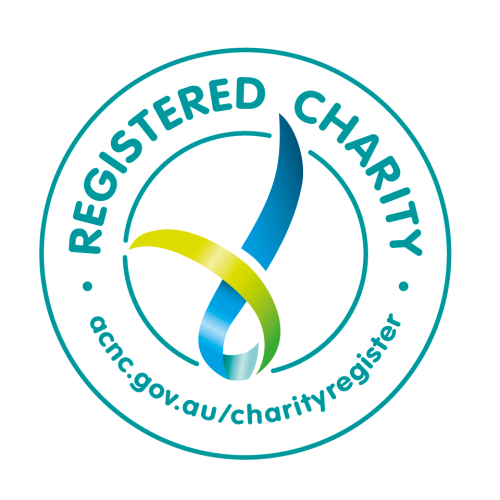This page gathers together the resources child and family workers most often ask us about
This guide is regularly updated to give you the latest policy and procedures; click on this link to download the latest version of the guide.
This page has a range of overviews and general explanations of the NDIS
You can get in touch with an advocacy organisation from this list
This is a link to the NDIS E-Learning Tutorial, produced by the Parenting Research Centre in partnership with DHHS.
This is a link to the DHHS “NDIS Child and Family System Interface Practice Guidelines”. This comprehensive guide for CFS workers is regularly
updated with the latest policy, procedures, and contacts.
This is a link to the DHHS “Resources for the child and family system workforce” page. This page is designed for Child FIRST, Integrated Family Services, Child Protection and Out-of-Home Care providers.
What kinds of disabilities are supported by the NDIS?
This is a link to the definition of disability used by the NDIS. This is a summary that is part of the NDIS operational guidelines.
Generally, an impairment must meet the above criteria to qualify for access to the NDIS; impairments of this kind are listed in NDIS “List B – Permanent conditions for which functional capacity are variable and further assessment of functional capacity is generally required“.
However, some impairments immediately meet the NDIS definition of disability. Only a letter with a diagnosis is necessary if an impairment appears on List A Conditions likely to meet the disability requirements (people aged 7-64), or on List D Conditions likely to meet the disability requirements (children aged 0-6)
Reports from medical professionals need to be written with the NDIS in mind -it is no good to provide a perfectly accurate description of diagnoses if the evidence doesn’t address the NDIS disability criteria. With that in mind, there are some guides to providing evidence on this page that are written specifically for medical professionals.
How can I help if a person’s application for the NDIS has been rejected?
If you are working with a person whose application for NDIS access has been rejected, the first step you should take is to contact an advocacy organisation that covers the person’s particular disability – someone from one of these organisations is more likely to understand the nuance of how that particular disability fits in with the NDIS, what evidence may be needed, or what approaches have been successful. We have put together a list of advocacy organisations here.
Here is a list of resources to help request a review of a decision or to appeal a decision.
This is a link to the Department of Social Services NDIS Appeals resource page.
The Rights Information and Advocacy Centre (RIAC) has a great webinar on this page about reviewing or appealing a NDIS decision, and several useful resources to do with NDIS appeals on this page.
How can I help a family get the best from an NDIS plan?
Planning is the most important stage of a person’s relationship with the NDIS- it is where the overall budget, and the specific supports, are decided. It is important to remember that the person developing a NDIS plan may not neccessarily have the background to understand the complex issues around a family: the role of CFS workers is to help ensure that the NDIS planner has all of the information necessary to give the family the best possible support.
This is a link to NDIS planning resources.
The pre-plan templates are valuable for two reasons: first they help gather all the details of everyday life, so that needed supports are not overlooked; second, they help the parent/carer to feel more relaxed and confident leading up to the planning meeting -a very stressful event. We have also gathered together many examples of NDIS plans, to help you visualise the process better.
There are also some examples of well-written goals. Every dollar in a plan has to be allocated in reference to the plan’s goals; this means that cleverly written goals can help create more flexible plans, and plans that can give more support to both the NDIS participant and their carer.
Be sure to check out the Carer Statement examples. The carer statement is an essential tool to make sure the NDIS planner understands whether there are pressures that might put the sustainability of care at risk.
How do families find carers or service providers?
Sometimes it is difficult to find organisations or individuals who can deliver the needed disability services. A recent development in the NDIS has been the emergence of ‘virtual agencies’ -these are online services that make it easier to find carers or other service providers. This is a page that includes links to some of these services.
This is a link to the Victorian Government’s NDIS service providers resource.
How can I help someone whose NDIS plan is not adequate?
The first step you should take is to contact an advocacy organisation that covers the person’s particular disability. We have put together a list of advocacy organisations here.
This is a link to a page that includes some guides to reviewing a plan.
The Rights Information and Advocacy Centre (RIAC) has a great webinar about reviewing or appealing a NDIS decision. Here is the link.
This is a link to the NDIS Operational Guideline explaining what kind of events or decisions can be reviewed.
This NDIS Operational Guideline covers the circumstances that can trigger a review of a plan
A person can request their NDIS plan be reviewed (this means creating a new plan) if their circumstances change. A change in circumstances is not necessarily limited to the person with a disability, but can also include the circumstances of the parent/carer. This is a link to a page that includes some guides to reviewing a plan.
This is a link to the definition of disability used by the NDIS. This is a summary that is part of the NDIS operational guidelines.
Generally, an impairment must meet the above criteria to qualify for access to the NDIS; impairments of this kind are listed in NDIS “List B – Permanent conditions for which functional capacity are variable and further assessment of functional capacity is generally required“.
However, some impairments immediately meet the NDIS definition of disability. Only a letter with a diagnosis is necessary if an impairment appears on List A Conditions likely to meet the disability requirements (people aged 7-64), or on List D Conditions likely to meet the disability requirements (children aged 0-6)
Reports from medical professionals need to be written with the NDIS in mind -it is no good to provide a perfectly accurate description of diagnoses if the evidence doesn’t address the NDIS disability criteria. With that in mind, there are some guides to providing evidence on this page that are written specifically for medical professionals.
If you are working with a person whose application for NDIS access has been rejected, the first step you should take is to contact an advocacy organisation that covers the person’s particular disability – someone from one of these organisations is more likely to understand the nuance of how that particular disability fits in with the NDIS, what evidence may be needed, or what approaches have been successful. We have put together a list of advocacy organisations here.
Here is a list of resources to help request a review of a decision or to appeal a decision.
This is a link to the Department of Social Services NDIS Appeals resource page.
The Rights Information and Advocacy Centre (RIAC) has a great webinar on this page about reviewing or appealing a NDIS decision, and several useful resources to do with NDIS appeals on this page.
Sometimes it is difficult to find organisations or individuals who can deliver the needed disability services. A recent development in the NDIS has been the emergence of ‘virtual agencies’ -these are online services that make it easier to find carers or other service providers. This is a page that includes links to some of these services.
This is a link to the Victorian Government’s NDIS service providers resource.
The first step you should take is to contact an advocacy organisation that covers the person’s particular disability. We have put together a list of advocacy organisations here.
This is a link to a page that includes some guides to reviewing a plan.
The Rights Information and Advocacy Centre (RIAC) has a great webinar about reviewing or appealing a NDIS decision. Here is the link.
This is a link to the NDIS Operational Guideline explaining what kind of events or decisions can be reviewed.
This NDIS Operational Guideline covers the circumstances that can trigger a review of a plan
A person can request their NDIS plan be reviewed (this means creating a new plan) if their circumstances change. A change in circumstances is not necessarily limited to the person with a disability, but can also include the circumstances of the parent/carer. This is a link to a page that includes some guides to reviewing a plan.
Over 4 million people in Australia report a disability or long term health condition, however the NDIS will fund supports for around 12% of those people. The NDIS is not intended to duplicate supports that are deemed the responsibility of other services.
This is a statement of the principles for deciding the responsibilities of the NDIS compared to other health and disability service systems -as decided by the Council of Australian Governments (COAG).
This is a link to a table outlining what the NDIS will pay for, compared with other services and government departments (current at March 2019)
This is a link to a NDIS publication outlining what supports are meant to be funded by state health systems (current at April 2019)
This is a link to a NDIS publication outlining what supports are meant to be funded by state education systems (current at April 2019)
This is a link to the NDIS Price Guide. This document lists each line item that can be funded in an NDIS plan, including the maximum cost or hourly rate.
The two most common questions about specific NDIS funding relate to transport and tech devices. Funding for these two kinds of supports doesn’t always fall under the NDIS’s definition of ‘reasonable and necessary supports’. Here is a link to a useful article explaining the ways the NDIS relates to transport costs, and here is a link that gives examples of how the NDIS might pay for a Smartphone or iPad.
A person can request their NDIS plan be reviewed (this means creating a new plan) if their circumstances change. A change in circumstances is not necessarily limited to the person with a disability, but can also include the circumstances of the parent/carer. This is a link to a page that includes some guides to reviewing a plan.
Section 5 of the DHHS publication: “NDIS Child and family system interface practice guidelines” covers the current support and escalation process when working with the NDIS. This section will always include the most up to date contact details. Click on this link to download the latest version of the guide.



